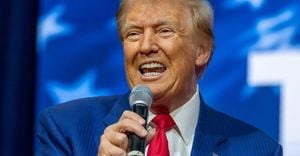With Diwali around the corner, excitement is brewing not just for the festival's lights and sweets but also for another tradition intertwined with it: Muhurat Trading. For many investors, this unique trading period is as much about superstition and symbolism as it is about financial gain. Scheduled for November 11 this year, Muhurat Trading offers traders a chance to invest auspiciously during one of the most significant festivals of India.
Let's start with the basics; what exactly is Muhurat Trading? Well, it’s a custom observed within the Indian financial markets where investors and traders buy or sell stocks during a specific time frame on Diwali. This trading period is considered highly auspicious and believed to bring prosperity and success for the year to come. The dates and times of Muhurat Trading are announced each year by the stock exchanges and take place for about 45 minutes, typically occurring after the Lakshmi Puja.
What makes this practice so important for traders? The significance lies deeply rooted in tradition. Diwali, which celebrates the victory of light over darkness and good over evil, is also linked to wealth and prosperity. By participating in Muhurat Trading, many hope to invite financial success and ward off potential losses. The act is symbolic of starting new ventures with divine blessings, reflecting the long-standing cultural practices embedded within Indian society.
Timing of Muhurat Trading changes every year based on astrological calculations. This year, the auspicious timing falls on the evening of November 11. Traditionally, the opening of Muhurat Trading is marked by prayers and rituals, ensuring all activities start on the right foot. This year, it will commence at around 6:00 PM and continue until 7:15 PM. Investors prepare by stocking up on their favorite stocks to capitalize on the environment of positivity and hope.
But how did this unique practice come about? Its origins trace back decades, and some historians think it began during the 1980s when people started acknowledging the link between financial markets and cultural practices. The Bombay Stock Exchange (BSE) and National Stock Exchange (NSE) have celebrated this occasion for years, recognizing its significance and engaging viewers with ceremonies, ensuring the trading atmosphere fosters positive vibes.
For many participating traders, it's not just about the financial aspect; it’s also about family, festivities, and fun. It’s common to see families gather to conduct Lakshmi Puja before trading begins, creating strong communal ties. These gatherings often serve as intergenerational bonding moments, combining the lure of financial markets with valuable family traditions.
Over the years, Muhurat Trading has seen high participation from both seasoned investors and novices, especially as more young people venture onto trading platforms. Social media has amplified this, with influencer advice leading to increased retail participation. Investors seem eager to engage, whether through personal connections or by following trends witnessed online.
The stakes are high: last year, the BSE and NSE saw significant trading volumes during Muhurat Trading, with many stocks witnessing sharp increases. Market analysts eagerly predict how this year will pan out, especially with the recent volatility across global markets influenced by factors like inflation, geopolitical tensions, and shifting monetary policies. The upcoming trading session may provide insights about market sentiment moving forward.
Still, as tradition plays its role, some market experts caution overly optimistic expectations. They suggest participants maintain realistic goals during this period, as outcomes are influenced by broader market conditions. One can't forget the whimsical nature of the stock market, its unpredictability can sometimes overshadow well-laid plans.
Many traders head to this trading session with stocks gleaned from personal intuition or extensive research, following the belief system where ‘what goes around, come around.’ It is not uncommon for discussions surrounding stock choices to evolve during festive family gatherings over sweets and delicacies, where new ideas are shared and insights exchanged.
Diwali and Muhurat Trading intertwine to create something more than just numbers and financial strategies; they embody cultural connections, historical significance, and personal aspirations, revered through generations. For communities across India, the festival and the accompanying trading serve as reminders not just of potential financial growth but also of unity and hope.
Reflecting on the upcoming Muhurat Trading, it's fascinating how tradition continues to influence modern financial practices, keeping age-old customs alive amid innovations. Whether it’s through stock purchases or stocks of sweets, Diwali holds abundant promise. Keep your senses tuned and ready to engage; who knows where the winds of fortune may lead this year?



